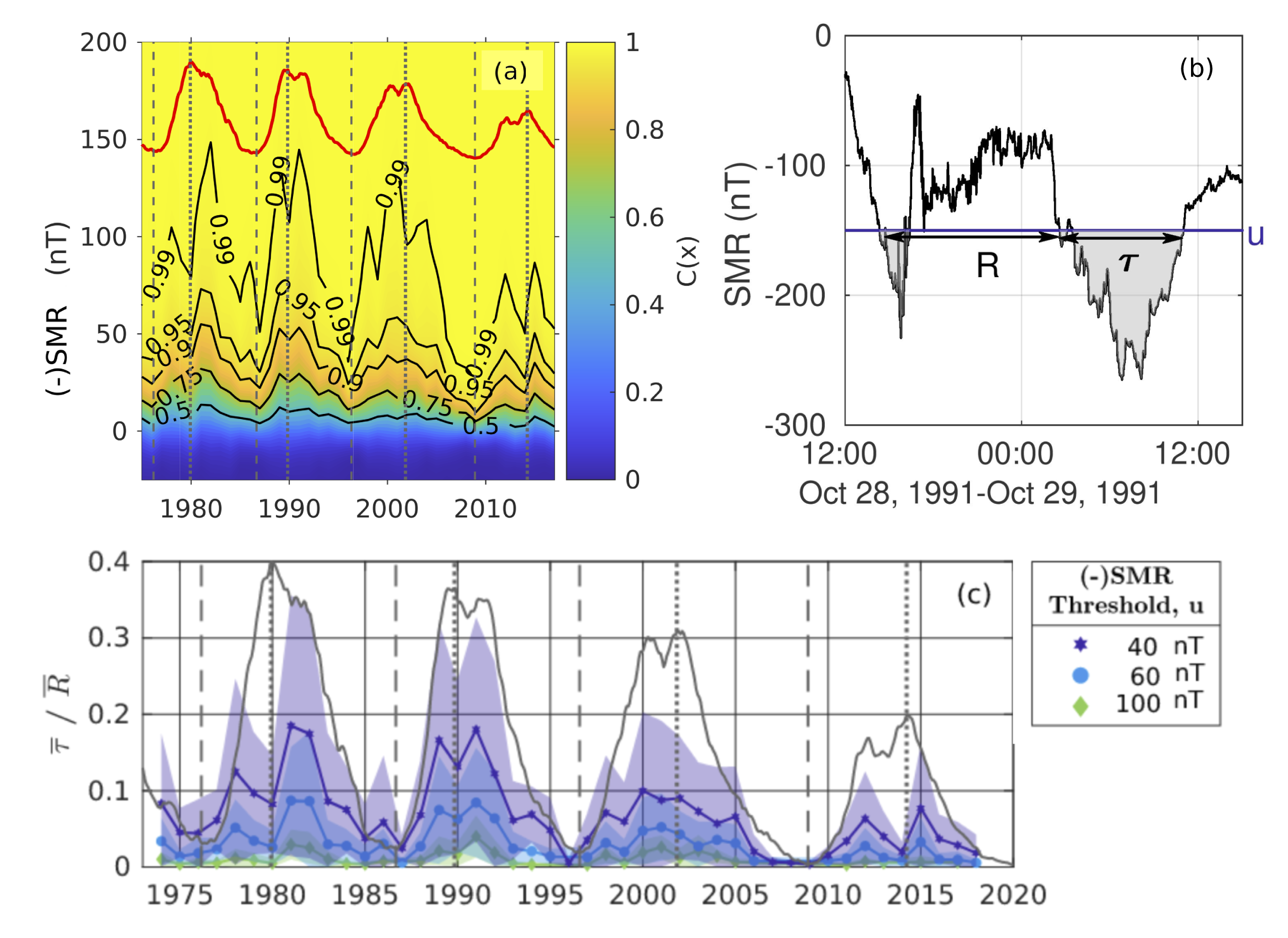MIST
Magnetosphere, Ionosphere and Solar-Terrestrial
Variation of Geomagnetic Index Empirical Distribution and Burst Statistics Across Successive Solar Cycles
By Aisling Bergin (University of Warwick)
Geomagnetic indices, based on magnetic field observations at the Earth's surface, provide almost continuous monitoring of Earth’s magnetospheric and ionospheric activity. We analyze two geomagnetic index time series, AE and SMR, which track activity in the auroral region and around the Earth's equator, respectively. We show here that quantiles of the index distributions track solar cycle variation over solar cycles 21–24. The question is then how the likelihood of events varies with solar cycle activity.
In this paper, events are defined as bursts or excursions above a threshold which is either (i) a fixed value or (ii) a quantile of the distribution of the observed index values. We study the solar cycle dependence of the distributions of the burst return periods, R, and the burst durations, τ. A result from the theory of level crossings (LC) [1] constrains how , the ratio of the mean burst duration to return period, depends on the underlying empirical distribution of the observed quantity.
Our main results are as follows:
- At fixed value burst thresholds, is peaked in the declining phase for AE annual samples and follows the sunspot number double peak for SMR.
- Bursts are identified in samples at three distinct phases of the solar cycle. At fixed quantile thresholds the distributions of τ and R fall on single empirical curves for each of (i) the AE index at solar minimum, maximum, and declining phase and (ii) the SMR index at solar maximum. This goes beyond the constraint on average from LC theory.
- The tail of the empirical cumulative distribution functions of the observed values of the AE and SMR indices collapse onto common functional forms specific to each index and cycle phase when normalized to the first two moments of their exceedance distributions.
Taken together, these results may combine to offer important constraints in the quantification of overall space weather activity levels.

Please see the paper for full details: Bergin, A., Chapman, S. C., Moloney, N. R., & Watkins, N. W. (2022). Variation of geomagnetic index empirical distribution and burst statistics across successive solar cycles. Journal of Geophysical Research: Space Physics, 127, e2021JA029986. https://doi.org/10.1029/2021JA029986
[1] Lawrance, A., & Kottegoda, N. (1977). Stochastic modelling of riverflow time series. Journal of the Royal Statistical Society: Series A, 140(1), 1–31. https://doi.org/10.2307/2344516